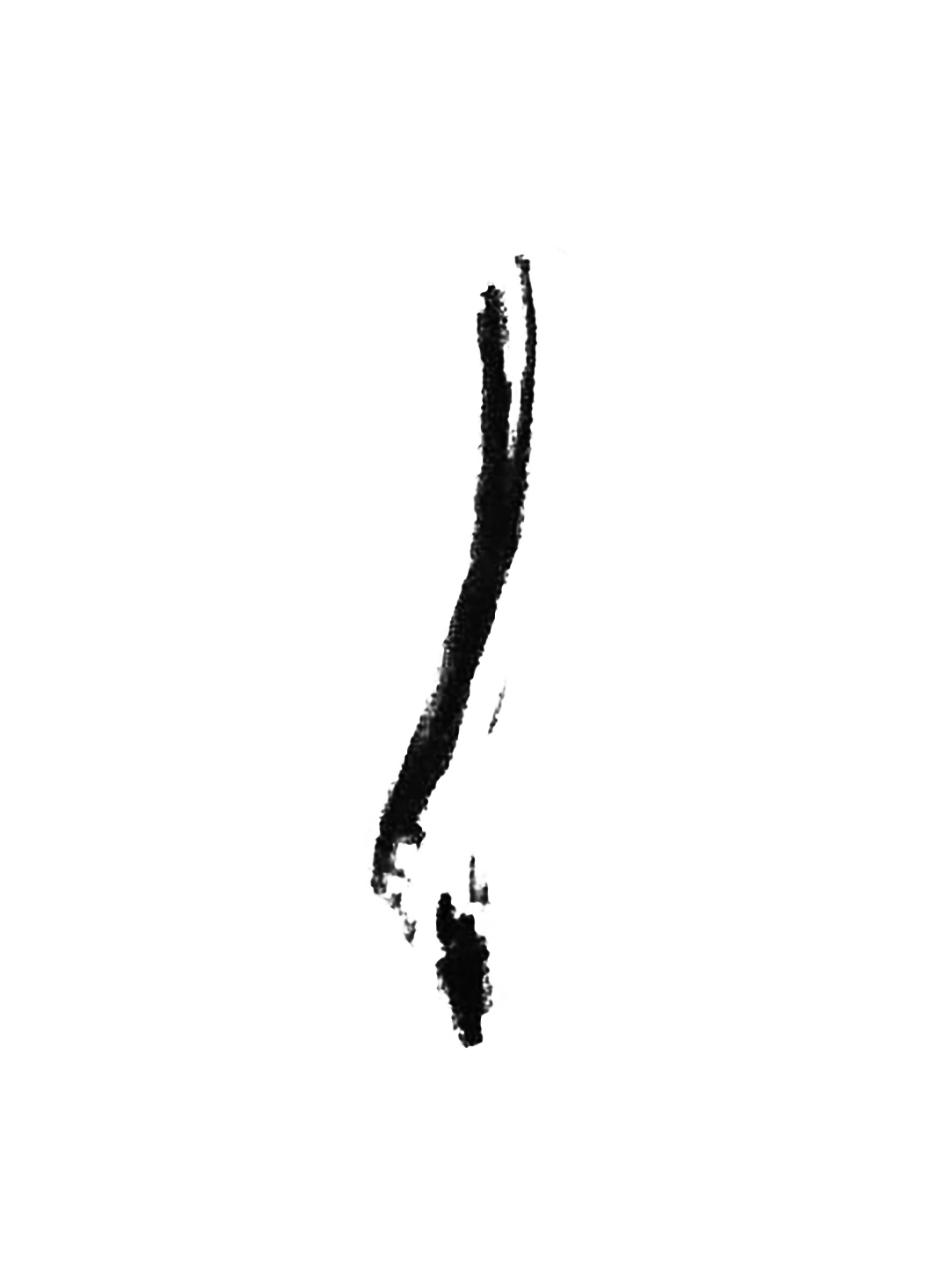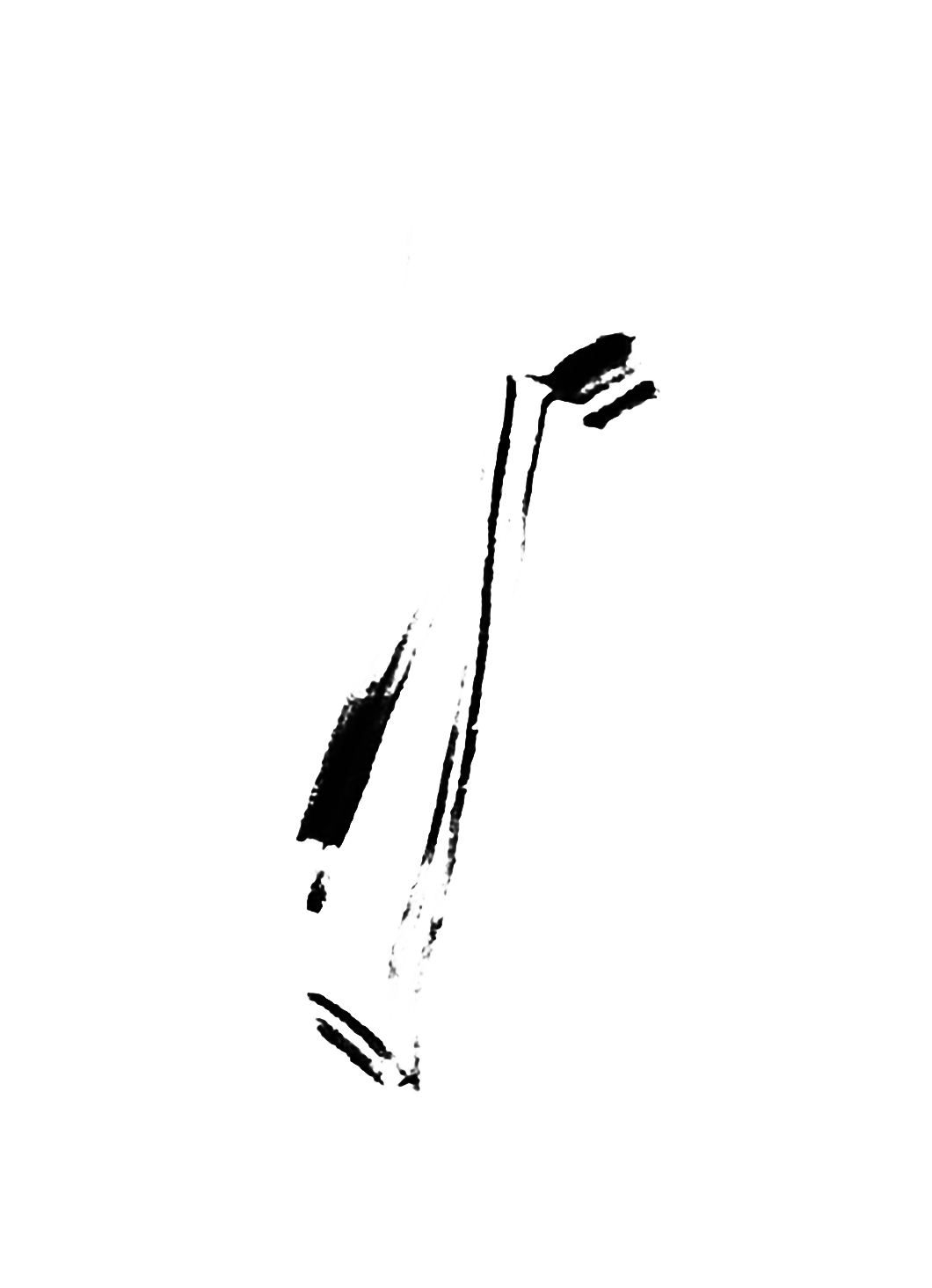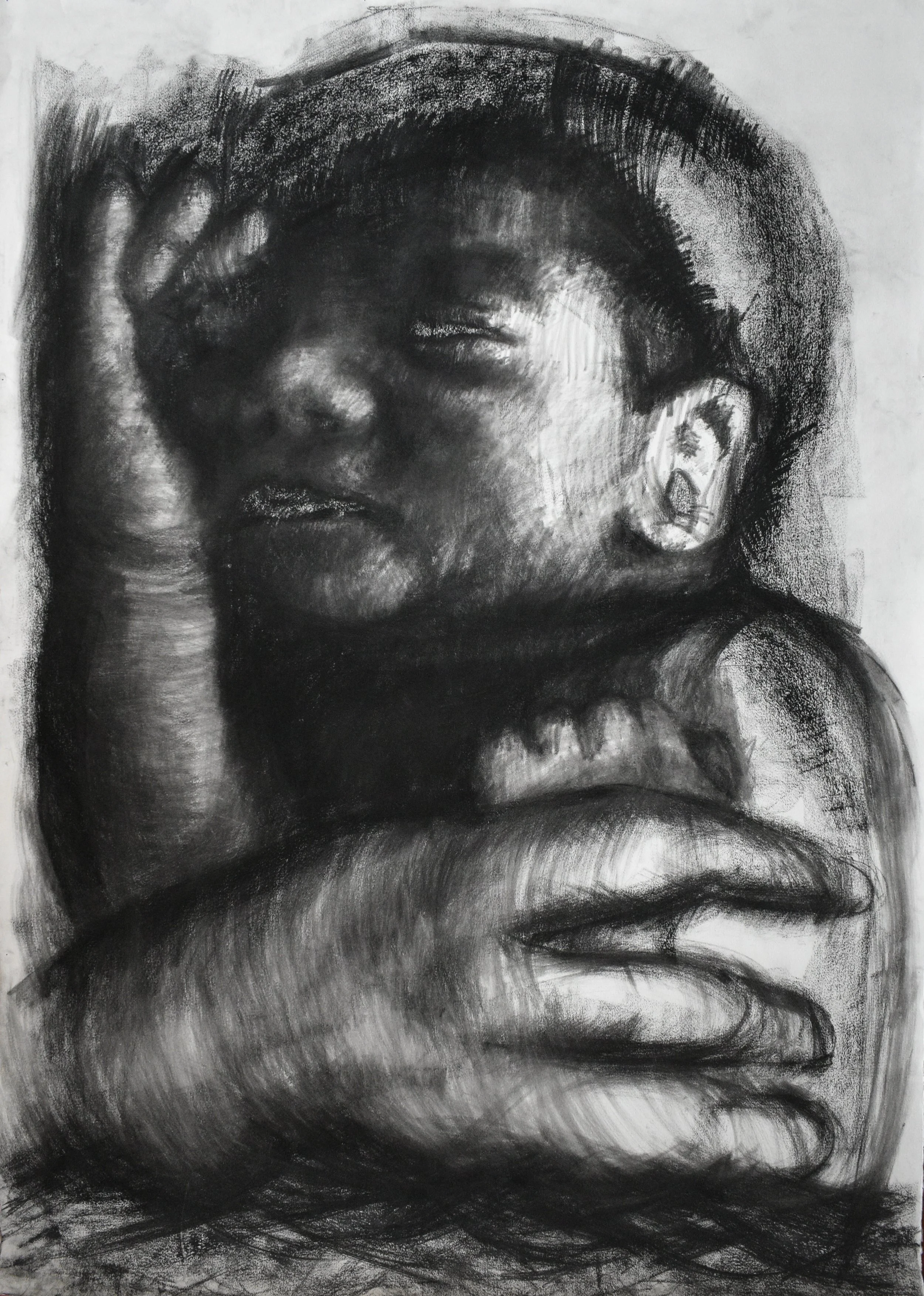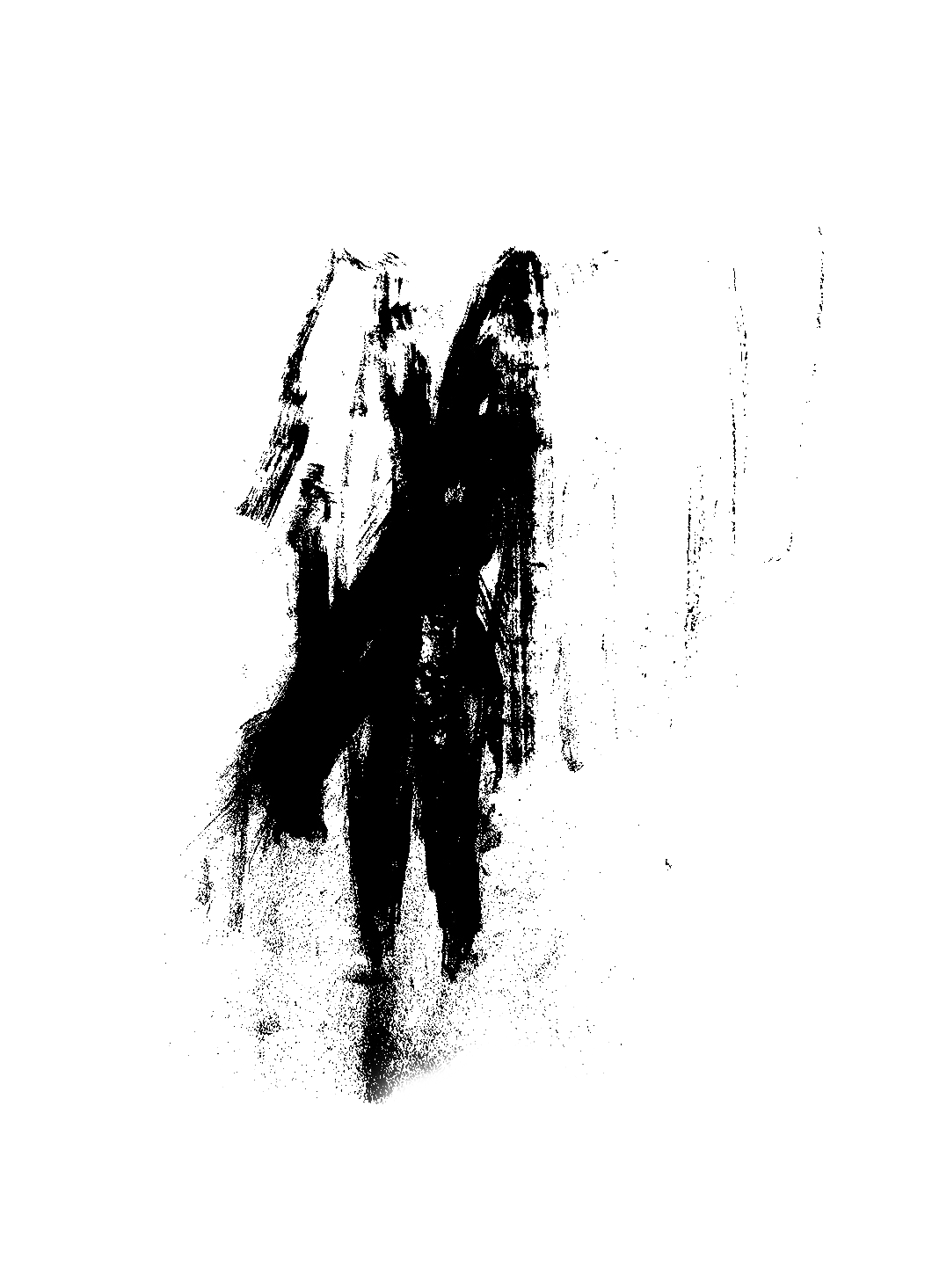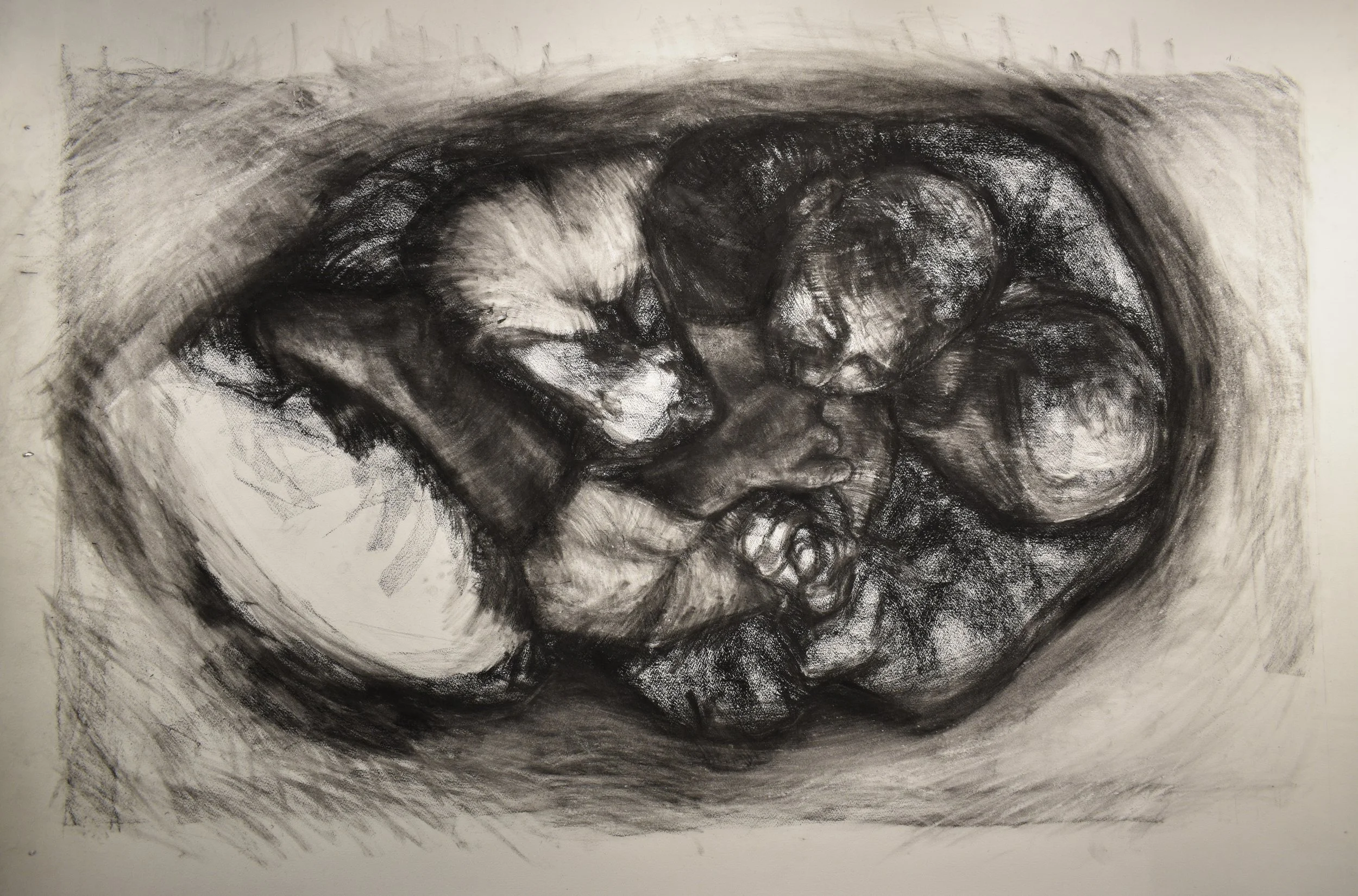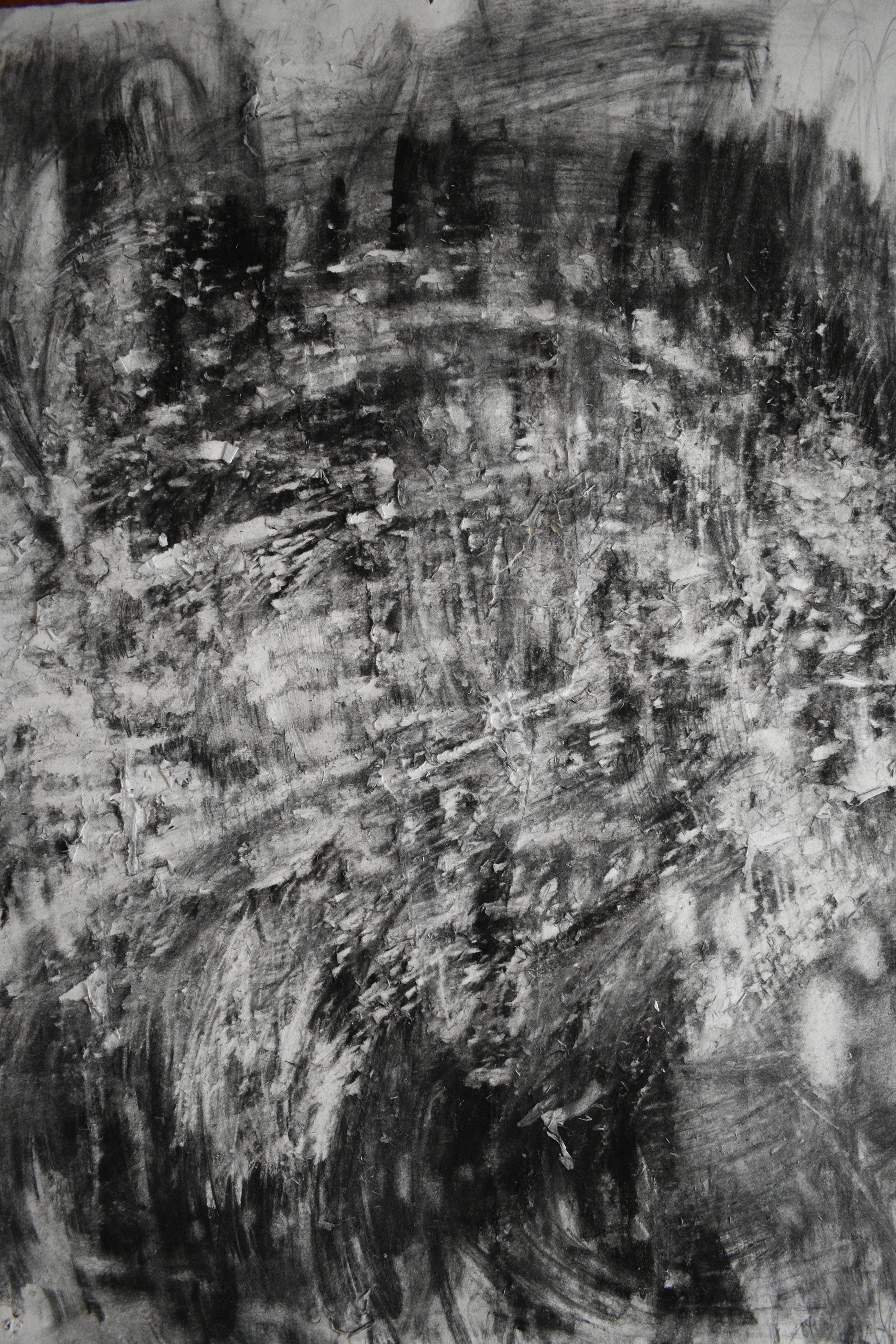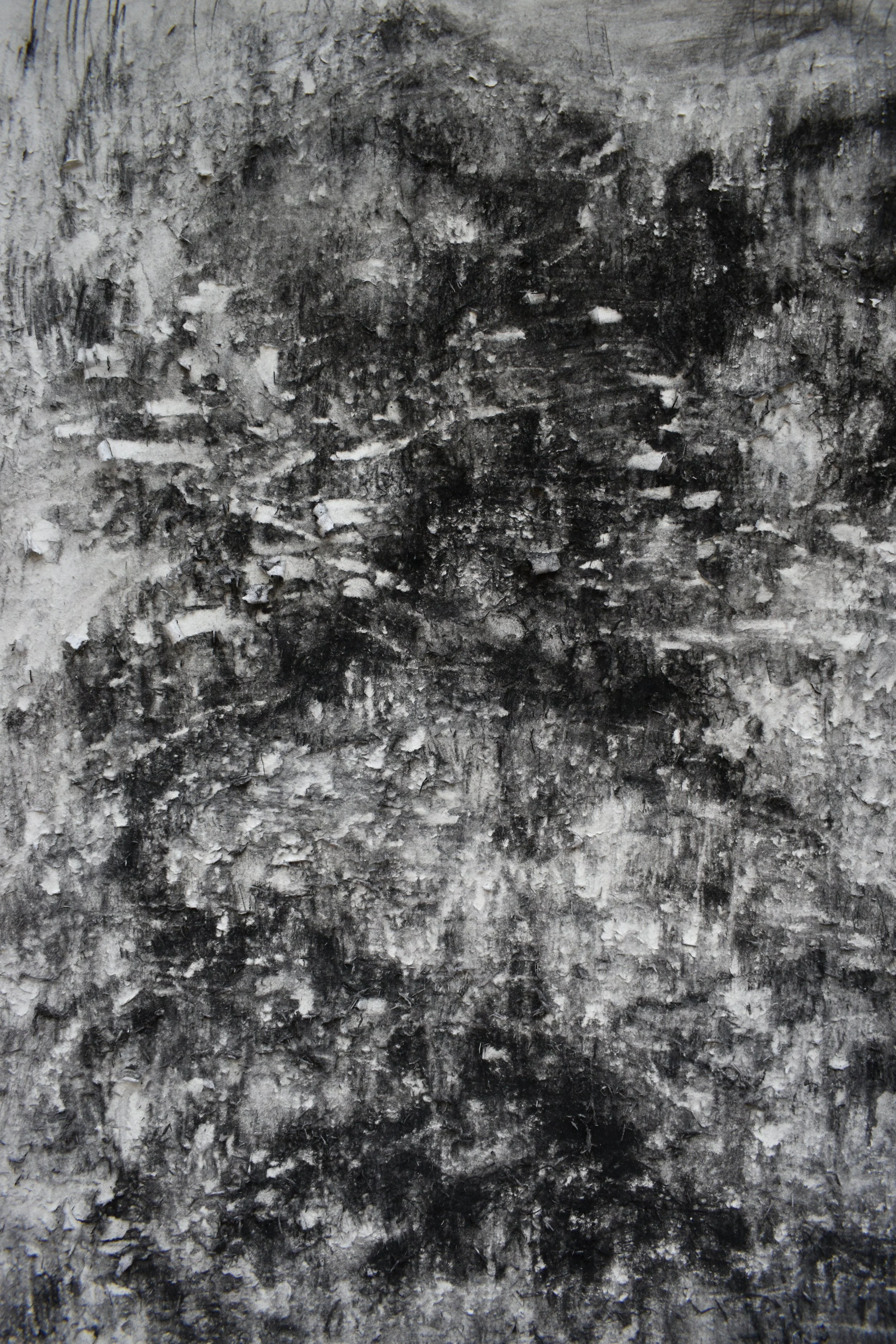Dormition
catalogue essay by Daniel Press
for the Dormition (2022) solo show by Kristone Capistrano at Wedge Gallery
Charcoal is the residue when organic matter becomes heated in the absence of air. Like the medium itself, suffocation from extreme pressure comes to mind when chronicling the process of Dormition. Unlike the title, the works will not die without suffering. The drawings seek a point of solace within the intensity of creation. Aristotle defines this as Telos: the elusive endpoint to a work of art. Kristone Capistrano, grappling with this colossal philosophical term, exhibits the end of creation as grappling with time itself.
Capistrano’s signature, larger-than-life style contends with the space as he depicts sleeping infants, fighters, and self-portraits. Meanwhile, other works engage with abstraction: a rare approach from an otherwise figurative artist. The abstractions engage with the fundamentals of drawing, linking the otherwise varied approaches.
Thirty-five pages of paper line the gallery wall, each marred with an increasing number of blackened strokes. Capistrano is thirty-five this year, and these strokes lean against each other like unstable birthday candles. No longer alight, these defused scores brood on the process of ageing.
Getting older as an artist strips away naive assumptions about the profession. Being an artist for a prolonged period can be a struggle. Any gains in wisdom and skill are contrasted with more responsibilities and less time.
Much of the work in Dormition was completed within a frantic two-week break between Capistrano’s role as an educator. He would often visit his studio – at a nook in the sandstone Rocks precinct of Sydney – during the late hours of the night. Burning the midnight oil provides an undistracted focus to create new work. Knowing nocturnal life would not be feasible while teaching morning lessons; he felt a constricting pressure to produce.
Like a prisoner’s cell, these thirty-five drawings could then resemble tally marks, counting down the days to unleash at a drawing with total focus. It is like a fighter training in the gym before competing in the ring. The strokes are not random abstractions, but disciplined experiments before a final grappling with the zeal of creation. Each practised stroke would later embed itself in the surrounding figures.
Newborns are a repeated motif in Capistrano’s work. Depicted in immense, cumbersome sizes, they represent the complexity of creation. Capistrano has never liked overworking his drawings; he often yearns for the drawing to return to its previous stages. He begun grappling with this non-linear process, sifting through the particles of the medium in a hapless search for a terminus.
Previously, Capistrano tackled the subject when working in layers for Substratum (2022), exhibited in Woollahra Gallery at Redleaf. Substratum was based on an ultrasound, peering at the under-layer of life as the basis for subsequent layers. Traces of the under-drawing emerge by lifting the charcoal with erasers and stripping layers back with sandpaper. The work ebbs and flows through the tides of surfaces that never fully submerge the image in a complete rendering.
Kristone Capistrano, 'In Substratum' install shot at Woollahra Gallery at Redleaf, 2022. Charcoal, sandpaper, and cement on paper. Image courtesy of the artist.
For Dormition (2022), Capistrano explores death resembling falling asleep. There is a tenderness to the infant being held, but the achromatic build-up is also unresolved. If you navigate the edges of the drawing, you’ll see strokes resembling One to Thirty-Five (2022). Dormition seeks to declare complete sections at different stages, leaving behind the powdered scuffs of pressure strokes.
The scale of the subject makes the process quite physically demanding, with the artist reaching and crouching towards the ceiling and floor. Part of the work is endurance, laboriously produced over long sessions to encourage these untimely technical decisions. He must remain awake to create; only then can he find rest.
Kristone Capistrano, 'Dormition' detail, 2022. Charcoal and sandpaper on paper. Image courtesy of the artist.
The Self (2017, 2022) reflects Capistrano’s past and present. Another feat of endurance, the work was produced and then erased in an uninterrupted twenty-four-hour period during his BFA Honours at UNSW. The accompanying stills show his undistracted focus and the labour-intensive qualities associated with the scale of the work. Each still shows a particular point the work was complete to the artist, yet the work-in-progress continues.
As it happened, The Self was produced when I first met Kristone. His dedication to studio would make me feel guilty about my irregular studio visits. I’d pass down the maze of plasterboard halls, and he’d call me over to look at his latest work-in-progress. Back then, he would query me if the work was finished. To me, they usually were at a point of resolution. However, Kristone would always have unfinished business.
The spectre of the erased stages would linger on in Kristone’s mind. Like a revenant, it would not leave. When I visited his new studio five years later, he rolled out the work once more. “I’m going to work on it for this show, just a bit. It’s almost there. It just needs… something”, Kristone said.
Kristone Capistrano, 'The Self' detail, 2017/2022. Charcoal, scratching and engraving on paper. Image courtesy of the artist.
The Earth Melts Away (2022) examines this irresolution further. One fighter has caught the other in a chokehold. The caught fighter is running out of options: tap out, try escape, or eventually pass out. Entombed in a clinch, evocations of suffocation become their most direct. The thickened linework in front of the lifted background gives the impression that the figures are in a womb.
The act of creation grapples desperately close to submission. Capistrano utilises his most expressive linework to date. The choker looms like a supernatural force over the choked, with the choker’s dusty face and robust limbs resembling an unformed golem. As the blood rushes to the highly rendered face of the choked figure, his hands lose feeling and remain underdrawn and weak. It is unclear whether this is the choked figure's end, but time is certainly running out.
It is ambiguous if Capistrano was triumphant in finding the elusive end of creation. Maybe Aristotle’s Telos is not the endpoint. Instead, purposefulness becomes the continued gasp for air.
Kristone Capistrano, 'The Earth Melts Away' detail, 2022. Charred branches and sandpaper on paper. Image courtesy of the artist.
Finally, Telos (2022) and Terminus (2022) are mesmerising acts of construction and destruction rendered in the most extreme terms. They are journeyed abstractions that almost reach a point of oblivion.
Reflecting on Dormition, the exhibit reads as an autobiography. A skilled maker in a swell of creative energy that could combust at any moment.
Kristone Capistrano, 'Telos' detail, 2022. Charcoal, pencil, sandpaper and burnt wood on paper. Image courtesy of the artist.
Kristone Capistrano, 'Terminous' detail, 2022. Charcoal, pencil, sandpaper and burnt wood on paper. Image courtesy of the artist.
Daniel Press
© May 2022
